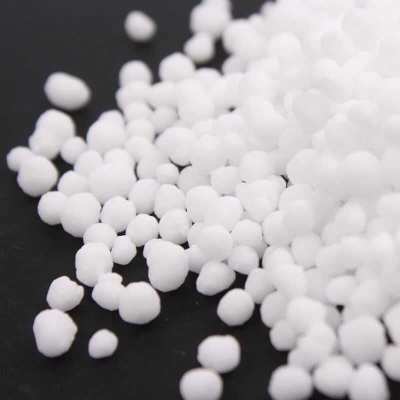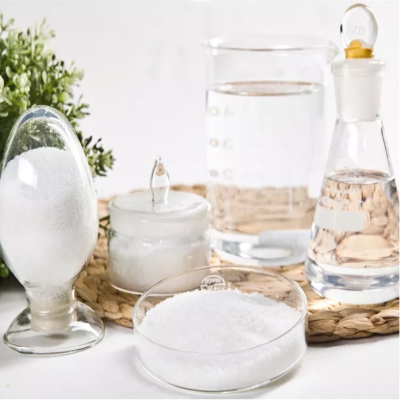-
Categories
-
Pharmaceutical Intermediates
-
Active Pharmaceutical Ingredients
-
Food Additives
- Industrial Coatings
- Agrochemicals
- Dyes and Pigments
- Surfactant
- Flavors and Fragrances
- Chemical Reagents
- Catalyst and Auxiliary
- Natural Products
- Inorganic Chemistry
-
Organic Chemistry
-
Biochemical Engineering
- Analytical Chemistry
- Cosmetic Ingredient
-
Pharmaceutical Intermediates
Promotion
ECHEMI Mall
Wholesale
Weekly Price
Exhibition
News
-
Trade Service
Introduction: Japanese scientists have developed a new type of binder material that can protect the graphite anode of lithium-ion batteries from degradation even after 1700 cycles
.
Text: The capacity of lithium-ion batteries will decrease over time, partly because of the degradation of the binder that protects the graphite anode
.
In order to solve this problem, scientists at the University of Science and Technology of Japan are studying a new type of copolymer binder that can keep the anode capacity at 95% of its original value even after more than 1700 charging cycles
.
Their discovery can greatly extend the battery life of electric cars, artificial organs and consumer electronics
.
People who have owned a smartphone for more than a year are most likely to realize that the built-in lithium (Li)-ion battery contains less power than the device when it is new
.
The degradation of lithium-ion batteries is a serious problem, which greatly limits the service life of portable electronic devices, which indirectly leads to a large amount of pollution and economic losses
.
In addition, the fact that lithium-ion batteries are not very durable provides a huge obstacle to the electric vehicle and renewable energy markets
.
Considering the seriousness of these problems, it is not surprising that researchers have been actively seeking ways to improve the latest designs of lithium-ion batteries
.
One of the main reasons for the decline in the capacity of lithium-ion batteries over time is the degradation of the widely used graphite anode (the negative terminal of the battery)
.
The anode and cathode (or positive terminal) and electrolyte (or a medium that carries a charge between the two terminals) together provide an environment in which electrochemical reactions for battery charging and discharging can occur
.
However, graphite needs a binder to prevent it from being scattered with use
.
The most widely used adhesive today, polyvinylidene fluoride (PVDF), has a series of shortcomings that make it far from ideal materials
.
In order to solve these problems, a team of researchers from the Japan Advanced Institute of Science and Technology (JAIST) is studying a new type of adhesive made of bisiminoene hydroquinone-p-phenylene (BP) copolymer
.
Their latest research was published in ACS Applied Energy Materials, led by Professor Noriyoshi Matsui, and also includes Professor Tatsuo Kaneko, Rajashekar Badam senior lecturer, PhD student Agman Gupta and former postdoctoral researcher Aniruddha Nag
.
So, in what aspects, the performance of BP copolymer is better than traditional PVDF binder for graphite anode? First, the BP binder has significantly better mechanical stability and adhesion to the anode
.
This is partly due to the so-called π-π interaction between the bisiminoenquinone group and the graphite, and is also due to the good adhesion of the ligand of the copolymer to the copper current collector of the battery
.
Secondly, BP copolymer is not only much more conductive than PVDF, but also forms a thinner conductive solid electrolyte interface with lower resistance
.
Third, the BP copolymer does not easily react with the electrolyte, which also greatly prevents its degradation
.
A new type of copolymer binder for graphite anodes of lithium-ion batteries (BP copolymer has many advantages and is ahead of traditional PVDF binders in terms of stability and durability
.
Photo courtesy: Matsumoto Kiyoshi, University of Science and Technology, Japan (Noriyoshi Matsumi)) Researchers have proved through experimental measurements that the combination of all these advantages has led to some major performance improvements
.
"The half-cell using PVDF as the binder showed only 65% of its original capacity after about 500 charge-discharge cycles, while the half-cell using BP copolymer as the binder showed 95% after 1700 such cycles.
% Capacity retention rate", Professor Matsumi emphasized
.
The half-cell based on BP copolymer also shows very high and stable Coulombic efficiency.
This method can compare the amount of charge flowing into and out of the battery in a given cycle; this also shows that the binder images taken with scanning electron microscope before and after the cycle It was shown that only tiny cracks were formed on the BP copolymer, and only very small cracks were formed on the PVDF, which was less than one-third of the total number of cycles
.
The theory and experimental results of this research will pave the way for the development of long-lasting lithium-ion batteries
.
In turn, this may have far-reaching economic and environmental consequences, as Professor Matsumi explained: "The realization of durable batteries will help develop more reliable products
that can be used for a long time .
This will encourage consumers to buy more expensive batteries.
.
Based on assets like electric cars, which will be used for many years
.
"He also commented that durable batteries will be good news for those who rely on artificial organs, such as patients with certain heart diseases
.
Of course, considering how many smartphones, tablets and laptops are used and charged every day, ordinary people will also benefit from it
.
The further development of electrode binders is expected to bring us closer to durable battery products and a greener future
.
This research was funded by the JST-Mirai project (Patent No.
JP18077239 granted) References: Bis-imino-acenaphthenequinone-Paraphenylene-Type Condensation Copolymer Binder for Ultralong Cyclable Lithium-Ion Rechargeable Batteries, ACS Applied Energy Materials, DOI:10.
1021 /acsaem.
0c02742 The source of this article: Japan Advanced Institute of Science and Technology (JAIST), for reference only
.
.
Text: The capacity of lithium-ion batteries will decrease over time, partly because of the degradation of the binder that protects the graphite anode
.
In order to solve this problem, scientists at the University of Science and Technology of Japan are studying a new type of copolymer binder that can keep the anode capacity at 95% of its original value even after more than 1700 charging cycles
.
Their discovery can greatly extend the battery life of electric cars, artificial organs and consumer electronics
.
People who have owned a smartphone for more than a year are most likely to realize that the built-in lithium (Li)-ion battery contains less power than the device when it is new
.
The degradation of lithium-ion batteries is a serious problem, which greatly limits the service life of portable electronic devices, which indirectly leads to a large amount of pollution and economic losses
.
In addition, the fact that lithium-ion batteries are not very durable provides a huge obstacle to the electric vehicle and renewable energy markets
.
Considering the seriousness of these problems, it is not surprising that researchers have been actively seeking ways to improve the latest designs of lithium-ion batteries
.
One of the main reasons for the decline in the capacity of lithium-ion batteries over time is the degradation of the widely used graphite anode (the negative terminal of the battery)
.
The anode and cathode (or positive terminal) and electrolyte (or a medium that carries a charge between the two terminals) together provide an environment in which electrochemical reactions for battery charging and discharging can occur
.
However, graphite needs a binder to prevent it from being scattered with use
.
The most widely used adhesive today, polyvinylidene fluoride (PVDF), has a series of shortcomings that make it far from ideal materials
.
In order to solve these problems, a team of researchers from the Japan Advanced Institute of Science and Technology (JAIST) is studying a new type of adhesive made of bisiminoene hydroquinone-p-phenylene (BP) copolymer
.
Their latest research was published in ACS Applied Energy Materials, led by Professor Noriyoshi Matsui, and also includes Professor Tatsuo Kaneko, Rajashekar Badam senior lecturer, PhD student Agman Gupta and former postdoctoral researcher Aniruddha Nag
.
So, in what aspects, the performance of BP copolymer is better than traditional PVDF binder for graphite anode? First, the BP binder has significantly better mechanical stability and adhesion to the anode
.
This is partly due to the so-called π-π interaction between the bisiminoenquinone group and the graphite, and is also due to the good adhesion of the ligand of the copolymer to the copper current collector of the battery
.
Secondly, BP copolymer is not only much more conductive than PVDF, but also forms a thinner conductive solid electrolyte interface with lower resistance
.
Third, the BP copolymer does not easily react with the electrolyte, which also greatly prevents its degradation
.
A new type of copolymer binder for graphite anodes of lithium-ion batteries (BP copolymer has many advantages and is ahead of traditional PVDF binders in terms of stability and durability
.
Photo courtesy: Matsumoto Kiyoshi, University of Science and Technology, Japan (Noriyoshi Matsumi)) Researchers have proved through experimental measurements that the combination of all these advantages has led to some major performance improvements
.
"The half-cell using PVDF as the binder showed only 65% of its original capacity after about 500 charge-discharge cycles, while the half-cell using BP copolymer as the binder showed 95% after 1700 such cycles.
% Capacity retention rate", Professor Matsumi emphasized
.
The half-cell based on BP copolymer also shows very high and stable Coulombic efficiency.
This method can compare the amount of charge flowing into and out of the battery in a given cycle; this also shows that the binder images taken with scanning electron microscope before and after the cycle It was shown that only tiny cracks were formed on the BP copolymer, and only very small cracks were formed on the PVDF, which was less than one-third of the total number of cycles
.
The theory and experimental results of this research will pave the way for the development of long-lasting lithium-ion batteries
.
In turn, this may have far-reaching economic and environmental consequences, as Professor Matsumi explained: "The realization of durable batteries will help develop more reliable products
that can be used for a long time .
This will encourage consumers to buy more expensive batteries.
.
Based on assets like electric cars, which will be used for many years
.
"He also commented that durable batteries will be good news for those who rely on artificial organs, such as patients with certain heart diseases
.
Of course, considering how many smartphones, tablets and laptops are used and charged every day, ordinary people will also benefit from it
.
The further development of electrode binders is expected to bring us closer to durable battery products and a greener future
.
This research was funded by the JST-Mirai project (Patent No.
JP18077239 granted) References: Bis-imino-acenaphthenequinone-Paraphenylene-Type Condensation Copolymer Binder for Ultralong Cyclable Lithium-Ion Rechargeable Batteries, ACS Applied Energy Materials, DOI:10.
1021 /acsaem.
0c02742 The source of this article: Japan Advanced Institute of Science and Technology (JAIST), for reference only
.







